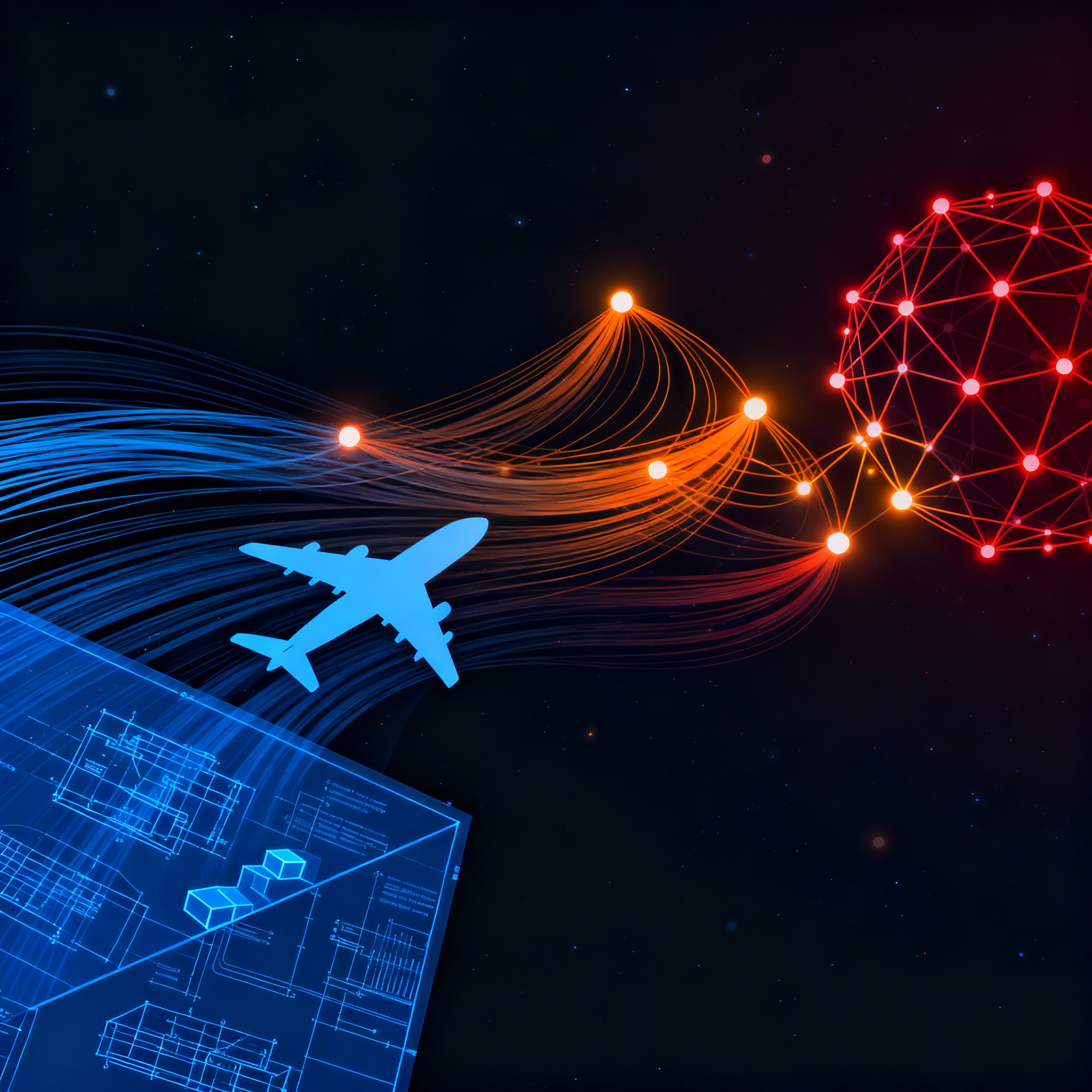
Revolutionizing Aviation Maintenance: How RAG Transforms Documentation and Knowledge Retrieval
Revolutionizing Aviation Maintenance: How RAG Transforms Documentation and Knowledge Retrieval
The aviation industry operates in a realm where precision, safety, and efficiency are non-negotiable. Maintenance teams deal with mountains of documentation—from engine manuals to regulatory guidelines—often scattered across outdated systems. Enter Retrieval-Augmented Generation (RAG), a cutting-edge AI technique that's reshaping how we handle this information overload. As a technical blog writer for ChatRAG, a Next.js boilerplate designed for building scalable chatbot-agent SaaS businesses, I'm excited to dive into how RAG is being tailored for aviation maintenance documentation. This post will explore the fundamentals, real-world applications, and actionable insights, drawing from the latest research to show why RAG isn't just a buzzword—it's a necessity.
Understanding RAG in the Context of Aviation Maintenance
At its core, RAG combines the power of large language models (LLMs) with retrieval mechanisms to fetch relevant information from external knowledge bases before generating responses. Unlike traditional AI that relies solely on pre-trained data, RAG pulls in real-time, domain-specific details, making it ideal for industries like aviation where accuracy is paramount.
In aviation maintenance, documentation includes everything from aircraft manuals, service bulletins, and part catalogs to historical repair logs. Technicians often waste precious time sifting through PDFs or databases to find the right procedure for troubleshooting a faulty engine or inspecting a wing structure. RAG addresses this by indexing these documents into a vector database, allowing AI agents to retrieve and synthesize information on the fly.
For instance, imagine a mechanic querying, "What's the torque specification for a Boeing 737 landing gear bolt?" A RAG-powered system would retrieve the exact section from the maintenance manual, cross-reference it with any updates, and generate a clear, contextual response. This isn't hypothetical—it's grounded in emerging frameworks like those explored in recent studies on AI-driven knowledge discovery.
Challenges in Aviation Maintenance Documentation and How RAG Solves Them
Aviation maintenance faces unique hurdles: voluminous and evolving documentation, regulatory compliance, and the need for rapid, error-free decision-making. According to industry reports, mechanics can spend up to 30% of their time searching for information, leading to delays and potential safety risks. Outdated systems exacerbate this, with siloed data making it hard to access holistic insights.
RAG tackles these issues by enhancing retrieval accuracy and generating human-like explanations. One key enhancement is the integration of graph-based structures, which map relationships between documents, parts, and procedures. For example, GraphRAG, a retrieval-augmented generation approach using graphs, allows for more nuanced queries by understanding connections—like how a wing airfoil design impacts overall aircraft performance. This is particularly useful in aviation, where maintenance often involves interconnected systems.
Moreover, RAG's robustness is highlighted in comprehensive surveys that outline architectures for handling complex datasets. A recent survey on RAG architectures and enhancements discusses how modular designs can improve retrieval in specialized fields, such as aeronautical engineering. By embedding aviation-specific ontologies, RAG systems ensure that responses are not only accurate but also compliant with standards from bodies like the FAA or EASA.
Real-World Applications: From Airfoils to Engine Wear Assessment
Let's look at practical examples drawn from cutting-edge research. In aerodynamic design, RAG frameworks are being used to uncover hidden knowledge in vast datasets. AirfoilRAG, a specialized RAG system for airfoil aerodynamic design, demonstrates how retrieval-augmented methods can accelerate knowledge discovery. Applied to maintenance, this could mean quickly retrieving design specs for wing repairs, reducing downtime during inspections.
Another compelling application is in troubleshooting and incident management. Aviation maintenance often involves diagnosing engine issues, where simulation techniques play a crucial role. Research on assessing aircraft engine wear through simulations shows how AI can predict wear patterns, and integrating RAG could enhance this by pulling in historical maintenance data for more precise diagnostics. Imagine an AI agent that not only simulates wear but also retrieves similar past incidents, providing step-by-step guidance.
Agentic systems further amplify RAG's potential. Agentic troubleshooting guide automation for incident management explores how autonomous agents can automate responses to maintenance queries, drawing from a knowledge base of past incidents. In aviation, this translates to faster resolution of issues like hydraulic failures, where the system retrieves relevant docs and generates a troubleshooting flowchart.
Even in structural optimization, RAG-inspired digital threads are making waves. A digital thread-based optimization framework for aeronautical structures, focusing on vertical tail planes, illustrates how interconnected data flows can inform maintenance strategies. By augmenting this with RAG, maintenance teams could query for optimized repair methods, ensuring structural integrity without overhauling entire components.
Implementing RAG for Aviation Maintenance: Actionable Insights
Ready to bring RAG into your aviation maintenance workflow? Start by building a robust knowledge base. Use tools like vector databases (e.g., Pinecone or FAISS) to index your documentation. Then, integrate an LLM like GPT-4 or Llama, fine-tuned for aviation terminology.
Here's a high-level implementation steps in a list for clarity:
-
Data Preparation: Collect and chunk maintenance manuals, logs, and regulations into manageable pieces. Embed them using models like Sentence Transformers for semantic search.
-
Retrieval Setup: Implement hybrid search combining keyword and semantic matching to handle technical jargon.
-
Generation Layer: Use the retrieved context to prompt the LLM, ensuring responses are grounded and verifiable.
-
Evaluation and Iteration: Test for accuracy using metrics like retrieval precision and response relevance. Incorporate feedback loops for continuous improvement.
For SaaS businesses looking to productize this, platforms like ChatRAG provide a solid foundation. Built on Next.js, it allows you to launch chatbot agents that integrate RAG seamlessly, handling user queries on aviation docs with ease. Whether you're developing an internal tool for airlines or a commercial service, ChatRAG's boilerplate speeds up deployment, letting you focus on domain-specific customizations.
Don't overlook enhancements for robustness. Insights from RIG, a RAG alternative from Google suggest exploring hybrid models that combine RAG with other retrieval methods for even better performance in noisy environments like aircraft hangars.
Benefits and Future Outlook
The advantages of RAG in aviation maintenance are profound: reduced search times, minimized human error, and enhanced compliance. By providing context-aware responses, it empowers technicians to make informed decisions quickly, potentially cutting maintenance costs by 20-30% through efficiency gains.
Looking ahead, as RAG evolves with graph integrations and agentic capabilities, we can expect even more sophisticated applications. For instance, combining RAG with predictive analytics could forecast maintenance needs before issues arise, revolutionizing preventive care.
In summary, RAG isn't just transforming aviation maintenance—it's setting a new standard for knowledge management in high-reliability industries.
Key Takeaways
- RAG bridges the gap between vast documentation and practical needs, ensuring accurate, timely information retrieval.
- Research-backed applications, from airfoil design to engine simulations, highlight its versatility in aviation.
- Implementing RAG requires a structured approach to data, retrieval, and generation, with tools like ChatRAG accelerating development.
- Future enhancements will focus on robustness and integration with emerging AI technologies.
By embracing RAG, the aviation sector can soar to new heights of efficiency and safety.
Ready to build your AI chatbot SaaS?
ChatRAG provides the complete Next.js boilerplate to launch your chatbot-agent business in hours, not months.
Get ChatRAGRelated Articles

Mastering Internal Knowledge: How RAG Powers Enterprise Documentation Search
In today's data-driven enterprises, sifting through vast internal documentation can be a major bottleneck. Retrieval-Augmented Generation (RAG) emerges as a game-changer, combining AI retrieval with generation to deliver accurate, relevant responses. This guide dives into implementing RAG for efficient knowledge management.

Streamlining Scholarly Scrutiny: RAG's Impact on Manuscript Review in Publishing
In the fast-paced world of academic publishing, reviewing manuscripts can be a daunting task fraught with information overload. Retrieval-Augmented Generation (RAG) emerges as a game-changer, combining AI's generative power with targeted data retrieval to enhance accuracy and efficiency. This post delves into how RAG streamlines the review process, from literature verification to constructive feedback.

Streamlining Patient Records: The Power of RAG in Modern Healthcare Management
In the fast-paced world of healthcare, managing patient records efficiently is crucial for quality care. Retrieval-Augmented Generation (RAG) combines large language models with real-time data retrieval to provide contextually accurate information. This post delves into how RAG can transform record management, backed by recent research and practical examples.